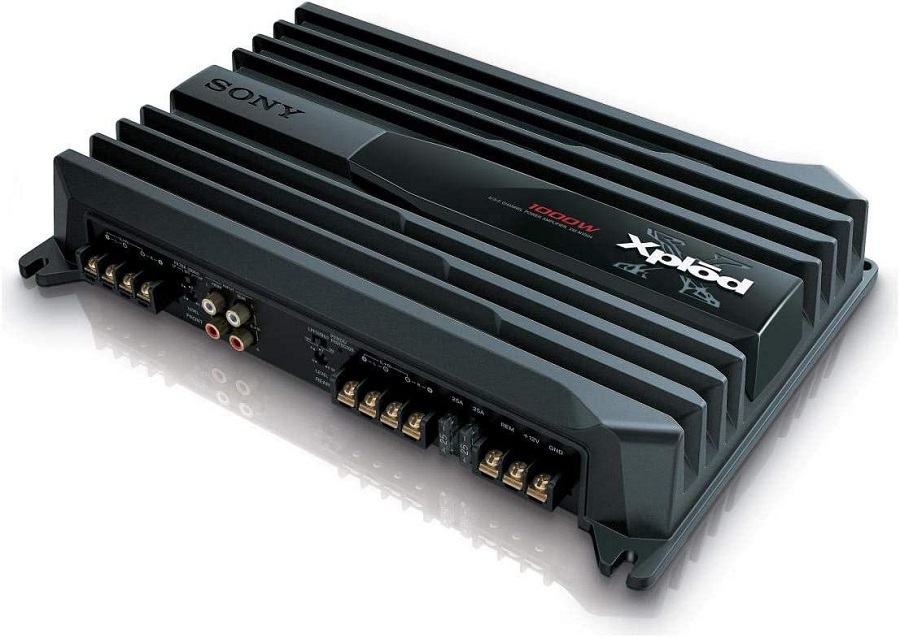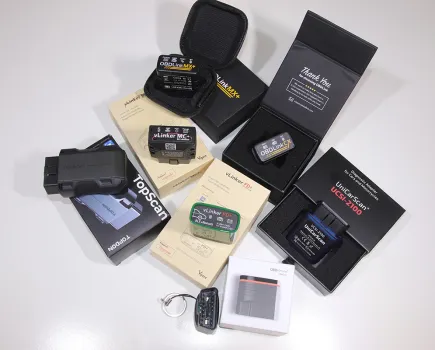Adding an amplifier is a big step when it comes to upgrading your car audio, but the results make it wholly worthwhile. Here are some of the best four channel car amplifiers on sale today.
The addition of an amplifier is the Big Step of the audio upgrade world, capable of powering upgraded speakers and subwoofers in your car. That’s because you need to make a hole between the engine bay and the cabin for a thick power wire, around which you must install a grommet too – a circular rubbery armor-ring. That wiring is a significant install cost-effort, so before you dive straight in, you need to learn about the power you have available on your car’s electrical system. For that, we’d recommend checking online forums or even YouTube – there’s bound to be someone out there who’s done this on your car before.
Once you understand what will and won’t drain your battery, you can start to think about which four-channel amp to invest in. There are three main forces at work with any car audio system design: your car, your budget and your taste in music. These four channel amplifiers are about the upgrade with sanity, you want more and better and you want it in all four corners of your car. There may not be more than the one spend planned – this may be about that simple sound power increase. Nonetheless, choosing a four channel amplifier, one with more than just basic features, will be an investment in future upgrades. One or two of the options listed here are able to get a bit flash later down the line, if you do end up as a bit of an audiophile.
They vary from value for money with grunt, to a slice of quality power, to the absolutely latest, newest thing. An amplifier that will fit into a modern stock system like never before. Even if your car has a stop-start system that would switch off normal aftermarket equipment. So, without further ado, here are the best four channel car amplifiers that you can buy today.
How we chose these products
Normally, we’d like to test every product that we recommend first-hand, but in this case, that’s not possible. Instead, I’ve compiled this list based upon my knowledge of the brand landscape, but more importantly, my understanding of the technical specifications which make certain amplifiers stand out above the rest. You can be sure that each of the products listed below are something that I’d be happy to install in my own project car.
Editor’s Note:
Adam is one of the world’s most prominent voices in the car audio industry, a voice which carries with it an impressive reputation. If there’s one person you want to take audio advice from, it’s Adam Rayner.
Be sure to also check out our guide to the best two channel car amps.
Best Four Channel Car Amplifiers
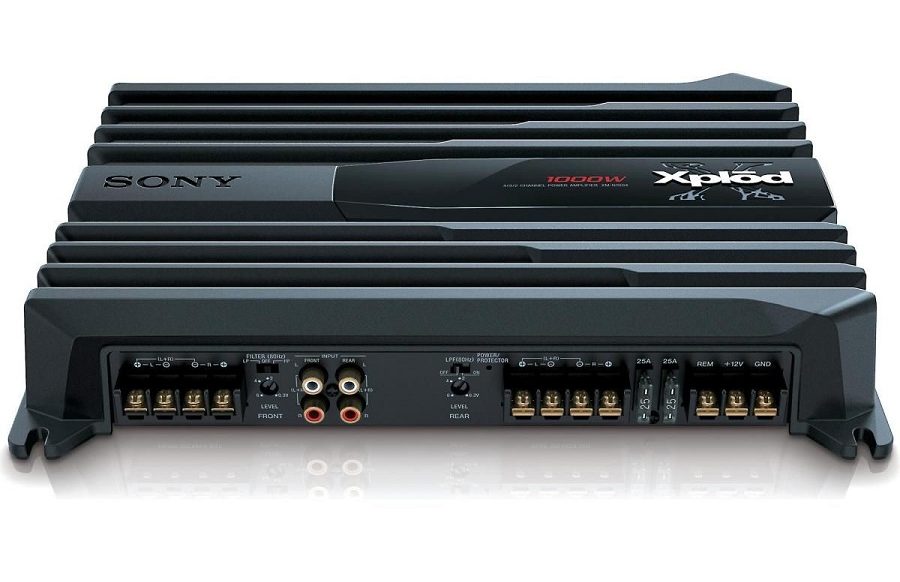
Sony XM-N1004
RRP: $159.99 / £110.00. Buy it here.
Put simply, the Sony’s MOSFET power supply transistor means better musical muscle. A more expensive device than standard ones, this used to be a feature of costly products. Now available on entry level stuff, it gives a good solid set of watts for the money. You only get a simple up, down or off choice of crossover, fixed at 80Hz per set of channels, but you don’t actually need to use them. You could just run all four corner speakers louder, or feed a woofer from 80Hz downwards, (lowpass) bridged on one channel pair, with your main speakers on the other. These mains can have the deep bass below 80Hz kept from them (highpass) so they go louder before breaking up. A switch costs less than a potentiometer or knob, so this is a simple but effective way of keeping the price down.
The signal to noise ratio is the CEA compliant one, as Sony claim a 100dB one. The main thing is, it will be a good clean sound quality. A high value for money solution, even if Sony still use the peak rating in publicity saying you have 1,000W. The two panel mounted 25A fuses say 700W RMS, even if you have 14V of Direct Current in your system.
- Power Output: 4ohms 4 x 70W, 2ohms 4 x 85W, Bridged 4ohms 2 x 175W
- Current Draw/Fuse Rating: 2 x 25A
- Signal To Noise Ratio: 93dB
- Features Rich? Two switchable 80Hz highpass or 80Hz lowpass filters, one for each channel pair: Subsonic filter (no freq. stated); input 0.3V to 6V
We check 1,000s of prices on 1,000s of retailers to get you the lowest new price we can find. Fastcar may get a commission from these offers. Read more here.
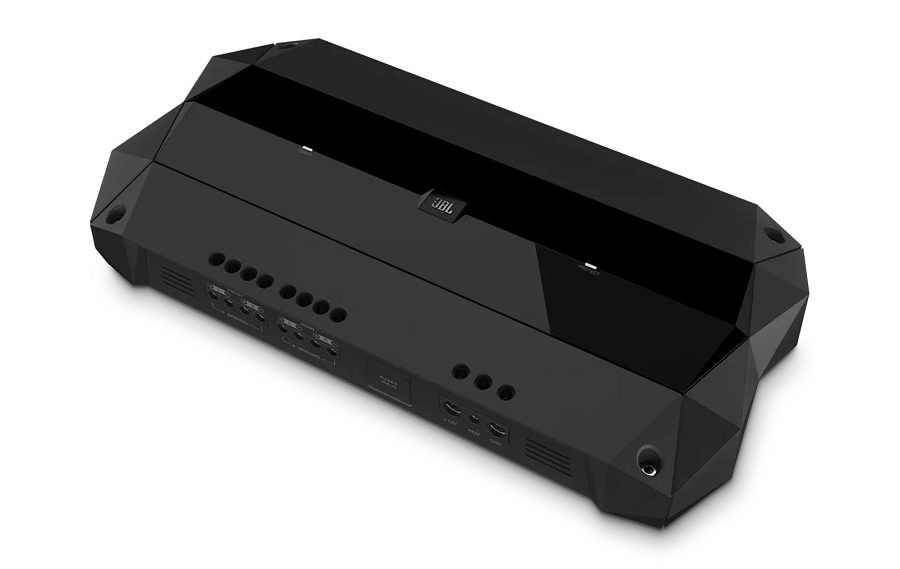
JBL Club 704
RRP: $145.99 / £159.40. Buy it here.
The design brief for the ‘Club’ car amps was for them to fit into smaller spaces, and as such, they have a smaller footprint and lesser depth of chassis for the given wattage. The mighty Harman Industries folks have owned JBL for a long time and offer some clever OEM features.
The main one is the RJ45 telephone style ADAS input socket, which overrides your audio when connected to an Advanced Driver Assistance System. To achieve this, you connect a T568B wire to the ADAS output. It will then interrupt your tunes with any warning messages, and you even get to pick which of the four corners you want the announcements to emanate from, with a knob. The Harman HALOsonic® systems of some vehicles can work with CLUB amps as well. That feature is a form of complex sound cancelling, like with headphones. There is an adjustable level control on the Club 704 just for that.
The amp comes with four bare-wire to RCA adapters included to connect speaker wires to the RCA sockets directly. There is a pair of dedicated RCA pre outs, but no subsonic filter. The adaptors mean the amp doesn’t need a separate high level socket-and-loom, albeit at the cost of greater expense. The reason for doing this is to achieve a robust input stage that can take signals from 0.2V to a whopping 20V speaker level. They use a three-level power switch to pick ‘Lo’ or Hi1 or Hi2’ to do it.
- Power Output: 4ohms 4 x 70W, 2ohms 4 x 100W, Bridged 4ohms 2 x 200W
- Current Draw/Fuse Rating: 2 x 30A
- Signal To Noise Ratio: 85dB
- Features Rich? Two switchable 32Hz to 320Hz highpass/lowpass filters, one for each channel pair: Speaker level or RCA input: RCA line output: ADAS connectivity and HALOsonic® noise cancelling where compatible
We check 1,000s of prices on 1,000s of retailers to get you the lowest new price we can find. Fastcar may get a commission from these offers. Read more here.
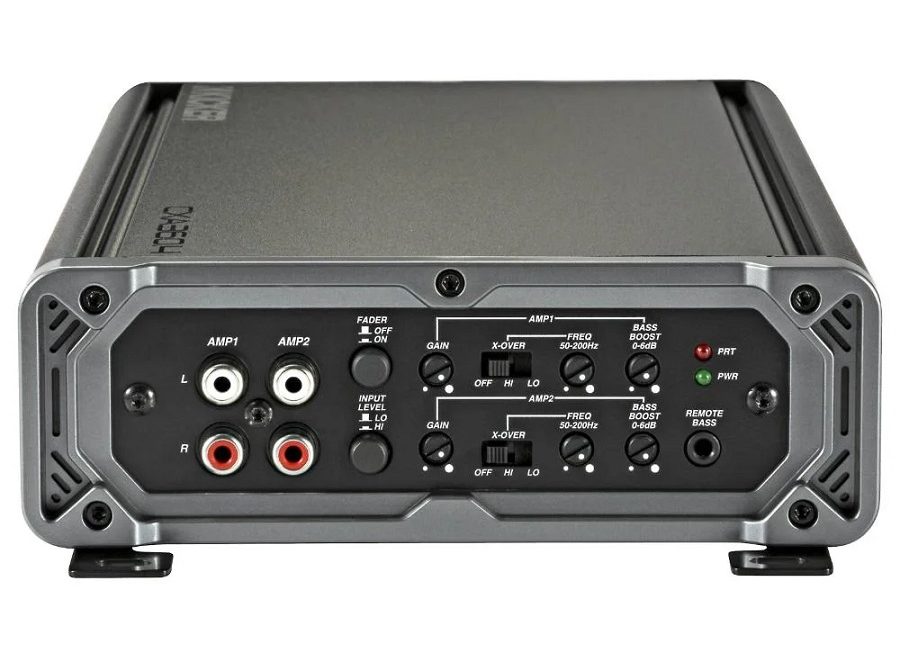
KICKER CXA360.4
RRP: $/£219.99. Buy it here.
Uniquely, this Class A/B amp comes with vertical mounting hardware as an option. It has a red circuit-protection LED to tell you if there’s anything wrong as well as the green power LED. There’s a 3.5mm socket for an optional CXARC remote bass knob and a pair of push buttons on the panel. One is about low level (0.125V to 5V) or high level (0.25V to 10V) signals, the other is marked ‘fader’. The first is about RCA wires or else speaker-to-RCA convertor wires being used to feed at speaker level. The fader one means leave it in the ‘Off’ position and you can use all four channels on one feed.
Kicker’s very name is about visceral bass, so it is no surprise to learn they have a special 40Hz bass boost. Not just a stated Q factor of say 0.5, which is about the breadth of frequencies lifted. Rather, it is their own little humpy curve, actually registered, like the PunchEQ is by Rockford Fosgate. Called KickEQ™, you get a dedicated adjuster per channel pair to take it up to as much as +6db. This is power hungry as its based 5Hz below most boost circuits’ choice-point. Deeper and humpier! So you use it with care and ideally, add that plug-in remote bass control on a wire.
A well thought out piece of kit. Kicker’s CXA360.4 makes efforts to be as widely compatible with different power levels of input as possible.
- Power Output: 4ohms 4 x 65W, 2ohms 4 x 90W, Bridged 4ohms 2 x 180W
- Current Draw/Fuse Rating: 40A
- Signal To Noise Ratio: 95dB
- Features Rich? Two switchable highpass/lowpass filters for 50Hz to 200Hz and KickEQ™ 40Hz Bass boost adjustable 0 to +6dB: Hi/Low level switch for RCA input: Remote bass control jack socket
We check 1,000s of prices on 1,000s of retailers to get you the lowest new price we can find. Fastcar may get a commission from these offers. Read more here.
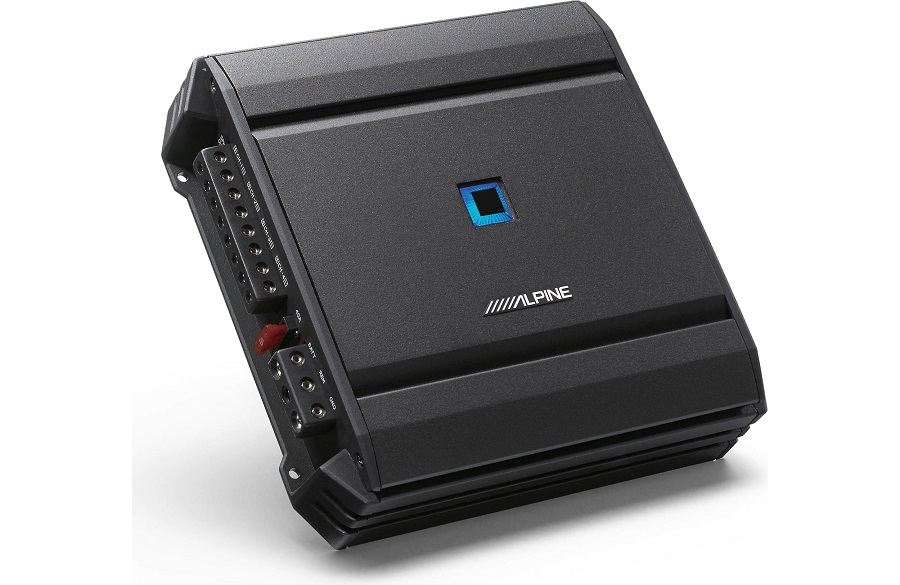
Alpine S-A32F
RRP: $319.99 / £249.00. Buy it here.
Alpine have always had an escalating series of products, from affordable but still good to state of the art. The top end products get the new technology while the lesser ones get the clever stuff later. This is called filtering-down of technology and is the highest value for money way to buy in. What starts in F1, ends up in posh cars, then cheaper ones. ABS braking is a good example. The S-Series amps feature technology that was once only in the higher R and X-series. S-Series amps offer three models. A four channel, a five channel and a mono model, so no two channel. A Class D amp, with many years of Alpine development behind it.
This means the S-A32F is a keen price for the always-lovely Alpine looks and has some cool features. There’s an optional RUX-KNOB2 bass control you can plug in for channels 3 and 4 when bridged into a woofer. There’s a high/low input level switch for the four RCA sockets. High is from 0.5V to 10V for speaker level. You’ll need to get some RCA connectors with open cable leads to add the speaker wires for that application. The low level input for normal RCA feeds is from 0.2V to 4V. Signal to Noise Ratio is excellent at 98dB and means that this is another top value sound quality tip. You are best to pair this with Alpine S-Series speakers. They are available as 6×9 ovals, coaxials in 6.5in, 5.25in and 4in as well as 6.5in components.
Looks good, sounds good. Because #Alpine!
- Power Output: 4ohms 4 x 55W, 2ohms 4 x 80W, Bridged 4ohms 2 x 160W
- Current Draw/Fuse Rating: 40A
- Signal To Noise Ratio:98dB
- Features Rich? Two switchable highpass/lowpass filters for 50Hz to 400Hz, one per pair of channels: Speaker level input with auto power-on (adapters) or RCA input: CH3/4 level control socket
We check 1,000s of prices on 1,000s of retailers to get you the lowest new price we can find. Fastcar may get a commission from these offers. Read more here.
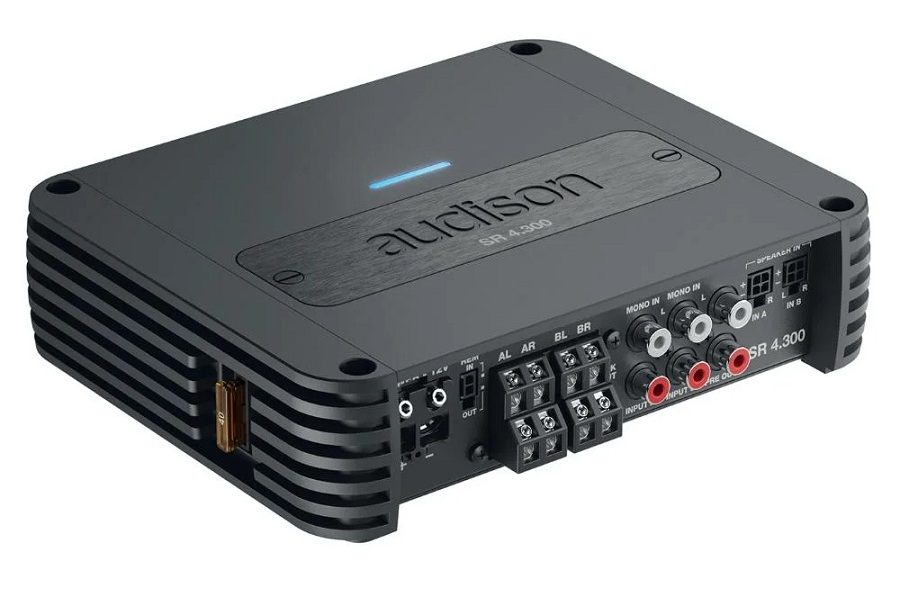
Audison SR 4.300
RRP: $289.99 / £349.00. Buy it here.
Another small footprint Class D amplifier with proprietary tech (company’s own smarts) in its guts. Each company’s take on the smaller Class D-with-quality amp seems to do this. Audison love an Acronym and call theirs ADT for Audison D-class Technology. It’s a dense little amp and has the fine controls hidden under a top panel, rather than on one end.
The crossover point for each channel pair can be chosen between 50Hz and a very high 3.2kHz. That’s because the SR4.300 is also designed to work for running active component speakers. It’s when you have a pair of channels for the tweeters and feed them only highs. Another pair of channels runs the mid-bass drivers, on their own crossed-over set of watts – no highs, though. An accepted much higher end way to run a set of high quality components and is louder and clearer. You need a very serious class of component driver though and it’s closer to professional audio than home hifi.
Audison have their BIT- control system that can be used with this amp. When connected, it bypasses the whole control panel, allowing an unsurpassed choice of upgrade path possibilities for this amplifier. A lot like the Wāvtech, this too has some cunning when it comes to OEM integration. If you plug in via the speaker wires, the amp has what Audison call USS or Universal Speakers Simulator. This pretends to be the low impedance load often engineered into stock systems’ amplifier self-protection circuits. That’s so that if a stock speaker blows, you don’t want the OEM amplifier cooking in its hidden spot.
A serenely clever item that can do ‘high end’.
- Power Output: 4ohms 4 x 85W, 2ohms 4 x 130W, Bridged 4ohms 2 x 250W
- Current Draw/Fuse Rating: 40A
- Signal To Noise Ratio: 100dBA
- Features Rich? Two switchable highpass/lowpass filters for 50Hz to 3.2kHz, one per pair of channels: Speaker level input sockets and RCA inputs: RCA line output: ART auto remote turn-on feature button
We check 1,000s of prices on 1,000s of retailers to get you the lowest new price we can find. Fastcar may get a commission from these offers. Read more here.
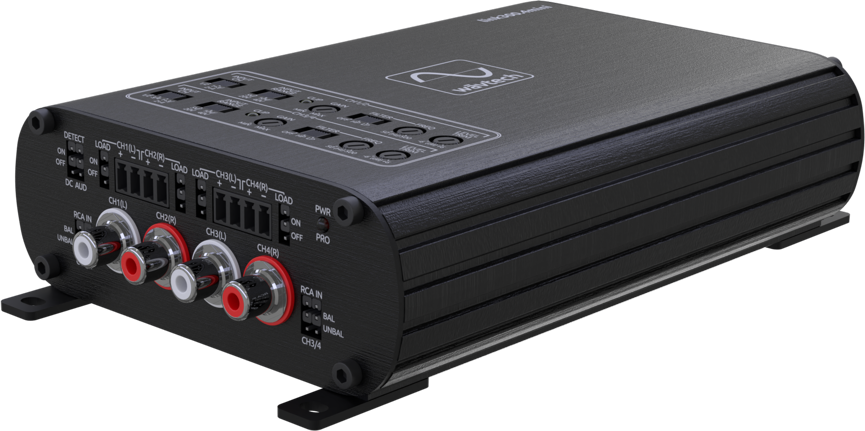
WĀVTECH link300.4mini
RRP: $/£299.95. Buy it here.
An installer’s dream, brand new in concept and for those who want results, without having anything on display. Best of all, it will make fab music from one tiny box, in brand new cars that stop and start. Made for OEM integration, the new Wāvtech range is designed by audio nutters who are true hardcore tech types. The low signal to noise ratio quote is because they use the tougher qualified version of the spec. A-weighted, it is about human hearing rather than a flat measurement. The link300.4mini is Wāvtech’s baby super compact Class D 4×50 watter, but there is a bigger one and also two monoblocks available too. Despite being such a small unit though, the link300.4mini needs a four gauge power wire.
The amp accepts RCA signals from 0.2V to 5V on ‘low’ setting, or 0.4V to a whopping 10V on ‘high’: a deeply cool feature if you do have a mad-end front music unit. On speaker level, for taking OEM speaker wire feeds, it is quietly insane. For one, no matter the power of your car’s OEM set up, it will cope. It will also look like the stock system to the car’s amp’s impedance-sensing, which causes the factory speakers to run at funny low impedances, thus sucking a few more factory-amp watts. Essentially, it cons the car’s own amp into thinking this extra wattage is all normal, and best of all, you can take wires from your car’s tweeter and mid-bass driver’s wires and ‘sum’ them. We’ll admit, it’s a bit complex in concept but it means you get the best of everything.
A truly leading edge future-now product for modern cars.
- Power Output: 4ohms 4 x 50W, 2ohms 4 x 75W, Bridged 4ohms 2 x 150W
- Current Draw/Fuse Rating: 40A external fuse required
- Signal To Noise Ratio: 80dBA (if measured ‘flat’, would be well over 100dB)
- Features Rich? Two switchable lowpass/highpass filters 50Hz to 500Hz: Summing speaker or RCA input: Auto turn-on by remote wire, DC offset or audio signal: OEM stop/start compatible, Input from 0.2V to 40V, five sets of protection circuitry and LED peak light

